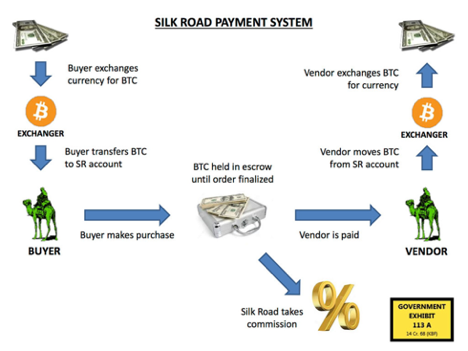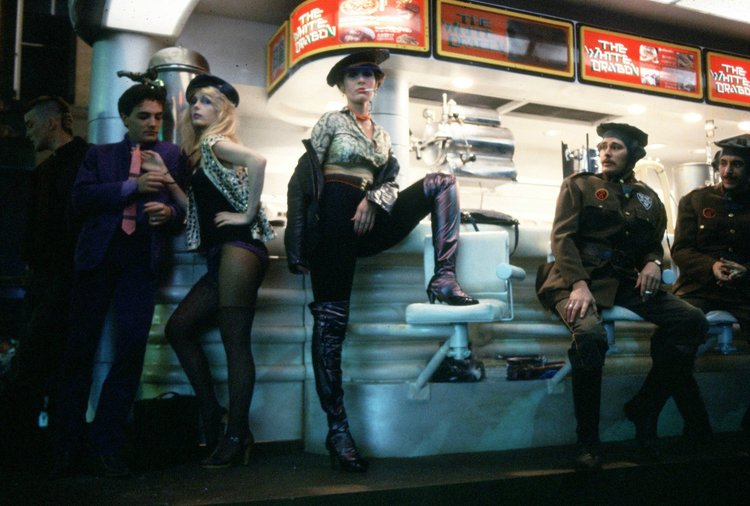In just a few months we will be celebrating two anniversaries — both bitcoin and its underlying technology blockchain will turn 10 years old. A lot has happened in that decade, so much so that these days there’s probably not a single media outlet that refrains from issuing news on cryptocurrencies. The technology opened up an entirely new economy, a whole market with thousands of new businesses which in turn created several hundred thousand jobs. Right now, the community is eagerly waiting for institutional investors to enter the market, whilst the giants of nearly all industries imaginable are playing around with blockchain technology and Forbes has a separate list of the richest people in crypto.
At this point, we don’t even hear much about the darker side of cryptocurrencies, considering all the mainstream media was quick to mention the Silk Road and the darkweb in their never-ending stream of ‘What is bitcoin?’ articles were seen only a couple years ago. Still, it’s important to know where we came from and, let’s admit, bitcoin and all the other crypto would have been nowhere near where they are today without the dark web. So, this week I’m exploring the complicated relationship between the deeper internet and cryptocurrencies.
The weird relationship:
Most of us know about Vitalik Buterin, the founder of ethereum, getting paid in bitcoin when he was writing articles for the Bitcoin Magazine. Indeed, a lot of the early adopters and miners received bitcoins as payment for their services to the community, but it seems that from 2011 onwards, when the infamous dark web marketplace Silk Road began operating, this wasn’t the primary use for the pioneering digital currency.
If you put bitcoin’s and Silk Road’s timelines together, you can actually learn a lot about the history of cryptocurrencies, the Silk Road and the government’s increasing interest in crypto.
- 31st of October, 2008 — Satoshi Nakamoto unveils bitcoin in a whitepaper.
- 3rd of January, 2009 — The Genesis Block is mined, the Bitcoin network is live.
- February 2011 — Silk Road went live after 6 months of development. At the time, bitcoin’s price floated at around $1.
- 1st of January, 2013 — Bitcoin is worth $13.
- 9th of April, 2013 — Bitcoin is worth $230.
- October 2013 — the FBI shuts down Silk Road, arresting its founder Ross Ulbricht, seizing 144,336 in bitcoins.
2 years later, Ulbricht was found guilty and sentenced for life, without the right for parole. He disputed the U.S. seizure of bitcoins until 2017 when he withdrew his claim. Long before that, the U.S. government sold all the seized bitcoins collecting over $48 million. They could’ve made almost a billion if they HODL’ed until January 2018, but that’s not the point here. The point is that the U.S. government actually traded bitcoins at some point.
There’s a lot to unpack here. Clearly, Silk Road would’ve never existed without bitcoin. At the same time, bitcoin would’ve probably never reached its current highs without the Silk Road. Also, the U.S. government might’ve never taken an interest in both Silk Road and bitcoin if the latter’s price wouldn’t’ve kept growing. But that’s just speculation.
How it worked
The 144,365 bitcoins seized by the FBI was just a tiny fraction of what was exchanging hands through the Silk Road. Ulbricht (probably) wasn’t selling anything himself, his platform functioned exactly how any legal e-commerce marketplace would. Silk Road took commission from sales and provided escrow services, while vendors also needed to pay a fixed fee for a ‘licence’ to trade there. Here’s a badly visualized scheme of how it worked:
There are different estimates available online and most of them suggest that around 10-15 million bitcoins exchanged hands on Silk Road alone, which is around 15% of all bitcoins exchanges at the time, amounting to approximately $1.5 - $2 billion. And that’s not taking into account all the other similar marketplaces.
On Silk Road, people were mostly trading illegal and prescription drugs, along with fake driver licenses and some legal goods and services. The marketplace actually prohibited the sales of child pornography, stolen credit cards, assassinations and weapons of any kind. Very-very reasonable. Some other lesser known platforms weren’t nearly as respectful.
Still, most of them utilized the same escrow model. Vacuum-sealed purchases were mostly sent out via postal services, which was the reason why Silk Road got on the government’s radar, as more and more drugs were detected going through the post. Buyers would then confirm receiving the package and leave reviews for vendors and their products. Upon confirmation, marketplaces would release the escrowed funds to the vendors.
Buying drugs on dark web marketplaces was and still is akin to buying a lottery ticket. A couple of people I talked to about it mentioned that they haven’t received their purchases on several occasions. Some of them were able to get their money back via arbitrage which apparently exists on several platforms, others just couldn’t. Overall such a lottery has not proven to be a hit for everybody if you get what I mean…
What’s in the shopping cart:
Hundreds of other global marketplaces, most of which are defunct now, emerged on the dark web after the Silk Road. According to research by The Economist, between December 2013 and July 2015, over $27 million was spent on three major marketplaces on illegal drugs. The most popular ones were MDMA, ecstasy, weed, and cocaine. $4.6 million was spent on prescription drugs, with non-drug items such as fake money, credit-card data, hacking services and pornography having a total of $0.8 million.
While there are a lot of websites on the dark web offering assassination, blackmail, and kidnapping services, there is no data on them available. Also, it’s really hard to tell whether any of them are genuine offerings and not simply scams.
Powered by cryptocurrencies:
Satoshi Nakamoto’s libertarian ideas clearly resonated and influenced Ross Ulbricht and bitcoin was exactly what enabled all those marketplaces’ to spring into existence. A website called The Farmer’s Market existed alongside Silk Road for a while, but they used PayPal and Western Union, which allowed law enforcement to easily track the payments.
Bitcoin, on the other hand, provided a certain degree of anonymity and for a while, everyone thought that those transactions were completely untraceable, but as is evident from the number of marketplaces that are being shut down by authorities, government agencies quickly caught up and found ways to trace those transactions.
According to someone called ’S.L.’ on deepdotweb.com, an information portal about the surface of the dark web, the first measure the traders took was ‘tumbling’ or ‘mixing’ the coins. Tumblers are services which basically mixed user’s bitcoins to other, ‘untainted’ coins to make it harder for anyone to trace the origin of those coins.
According to the same website, all of the currently active marketplaces still make use of the bitcoin, but due to privacy concerns, the network’s slow throughput, and high transaction fees, some of them are now also offering alternative payment methods, most of which are privacy coins. Currently, Monero is the second cryptocurrency of choice for those markets, mostly due to its advanced privacy systems such as the ring signatures and stealth addresses. Some platforms also allow their users to pay with bitcoin cash, ethereum, litecoin, and zCash.
As to how such marketplaces deal with the volatility of cryptocurrencies, a girl I know who lives in the U.S. and frequently uses their services told me this:
‘The prices are listed in both fiat and crypto, they update the amount of bitcoins I need to pay automatically. It gets annoying, as sometimes I exchange $100 worth and while I wait for it to come through the rate goes up and I’m lacking just a tiny amount of BTC to complete the purchase’.
That’s not the only thing she has to worry about. She said that it’s common practice for law enforcement to run shops and even entire marketplaces as honeypots to catch dealers and buyers and there’s always a possibility of being scammed out of money.
The dark web is not just dark stuff:
Undoubtedly, the biggest sections of the dark web are reserved for shady activities, but not all of it. For instance, WikiLeaks is a dark web platform and it allows whistleblowers to upload classified information incognito. Several major media outlets, such as the New Yorker, have their own dedicated portals on the dark web for their sources to provide them with valuable information safely.
Basically, apart from being a place to buy drugs, ordering an assassination on the guys that stomped all over your lawn or buying someone’s personal information, the dark web is a safe haven for dissidents, free speech activists, and journalists. Cryptocurrencies, in turn, also provide them with a way of getting paid for the dangerous work they are doing for the good of the people, almost instantly and securely.









